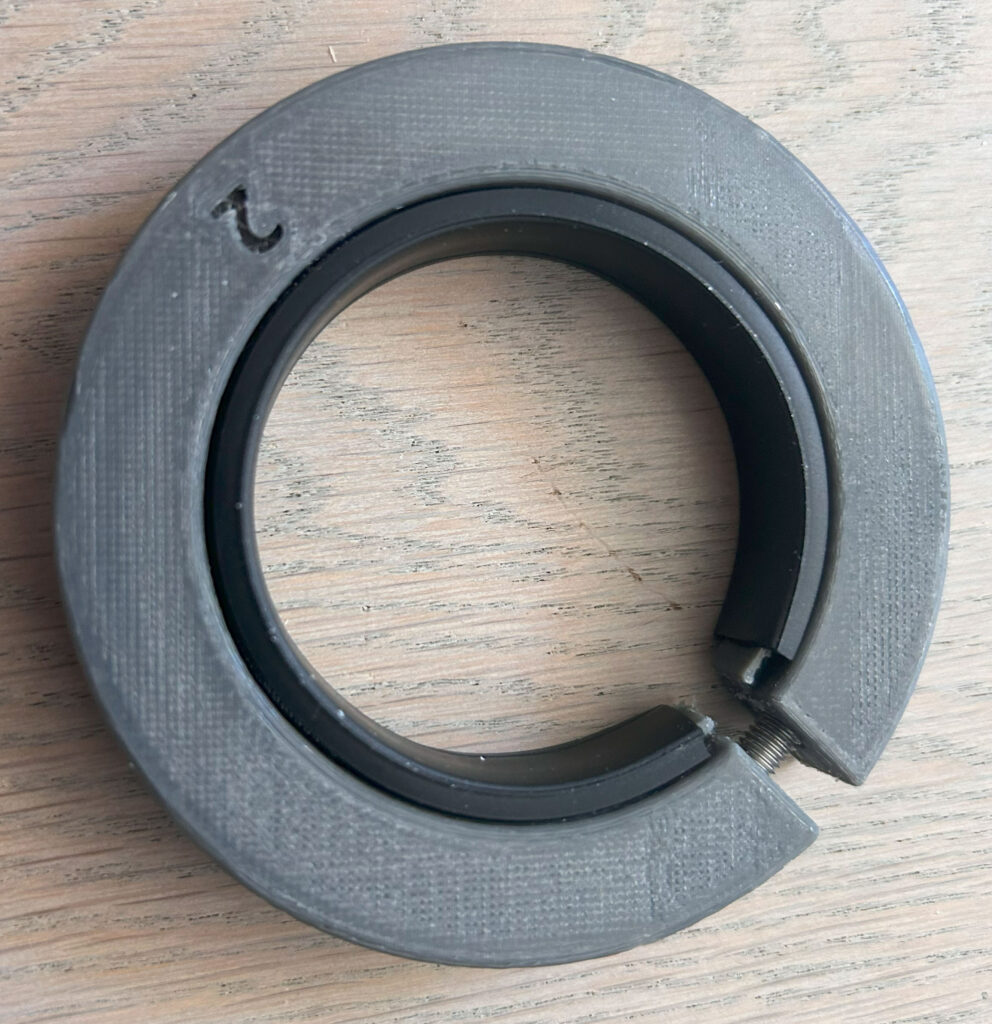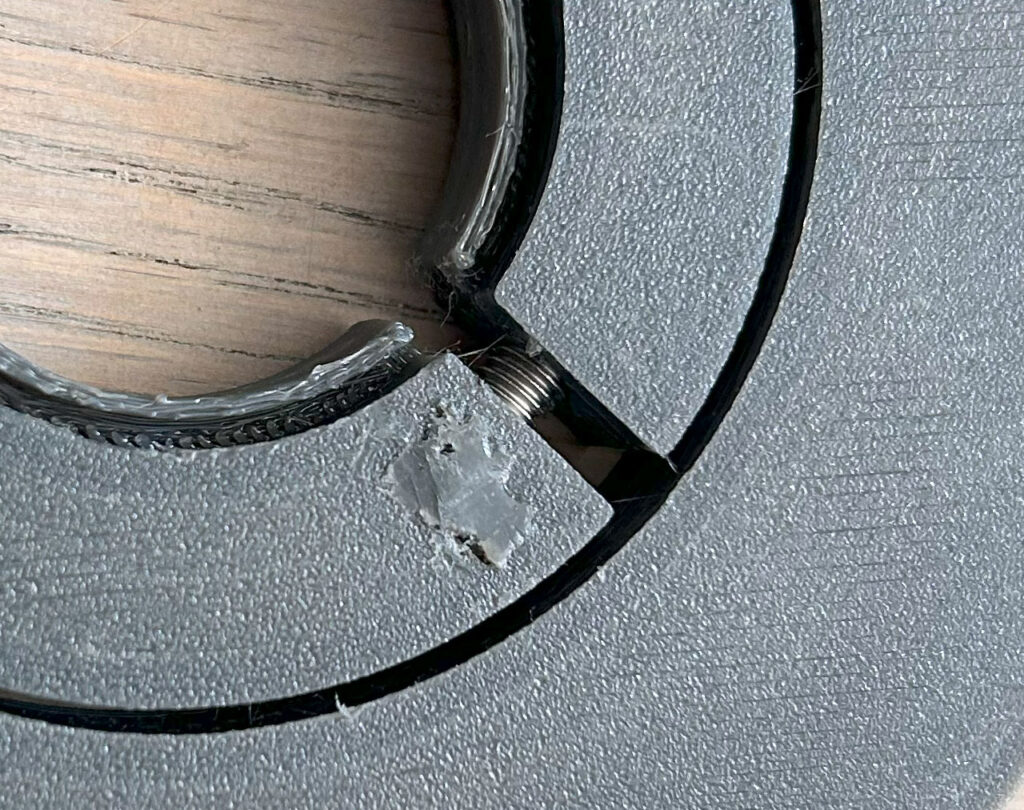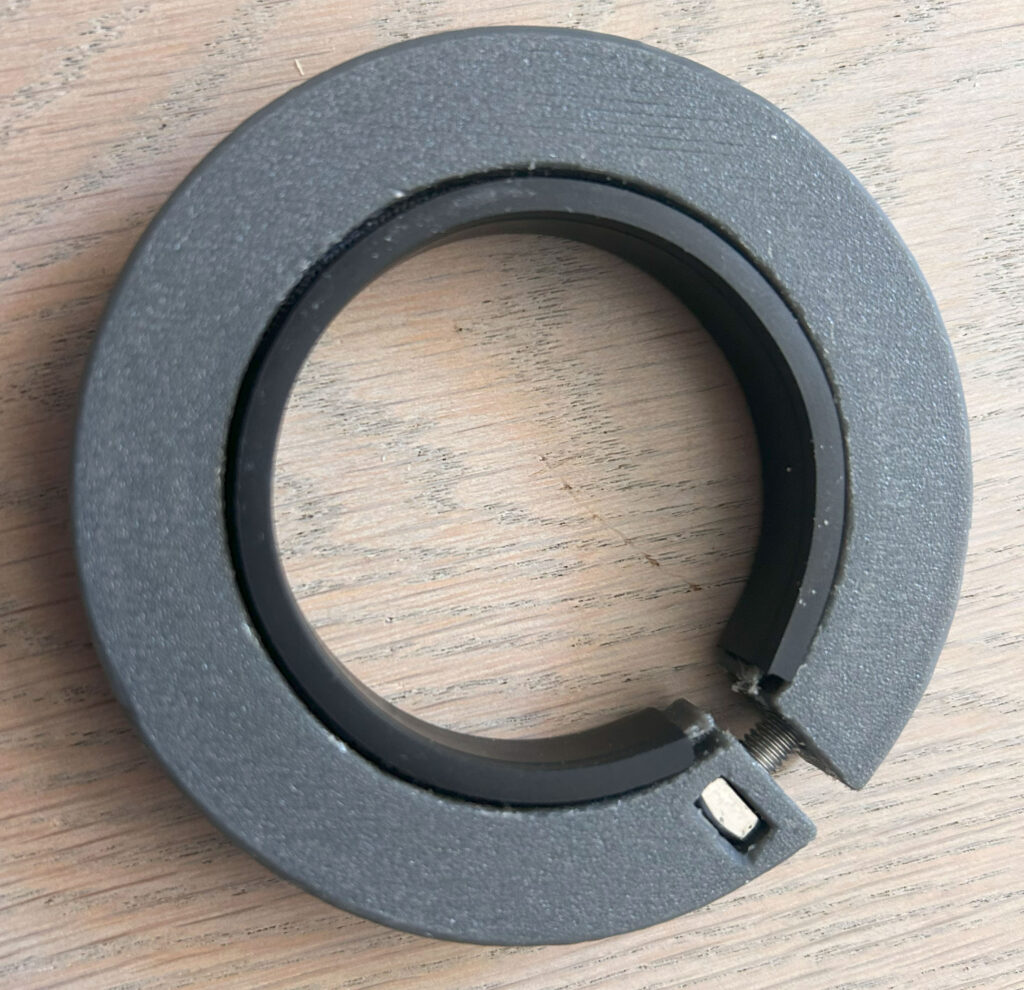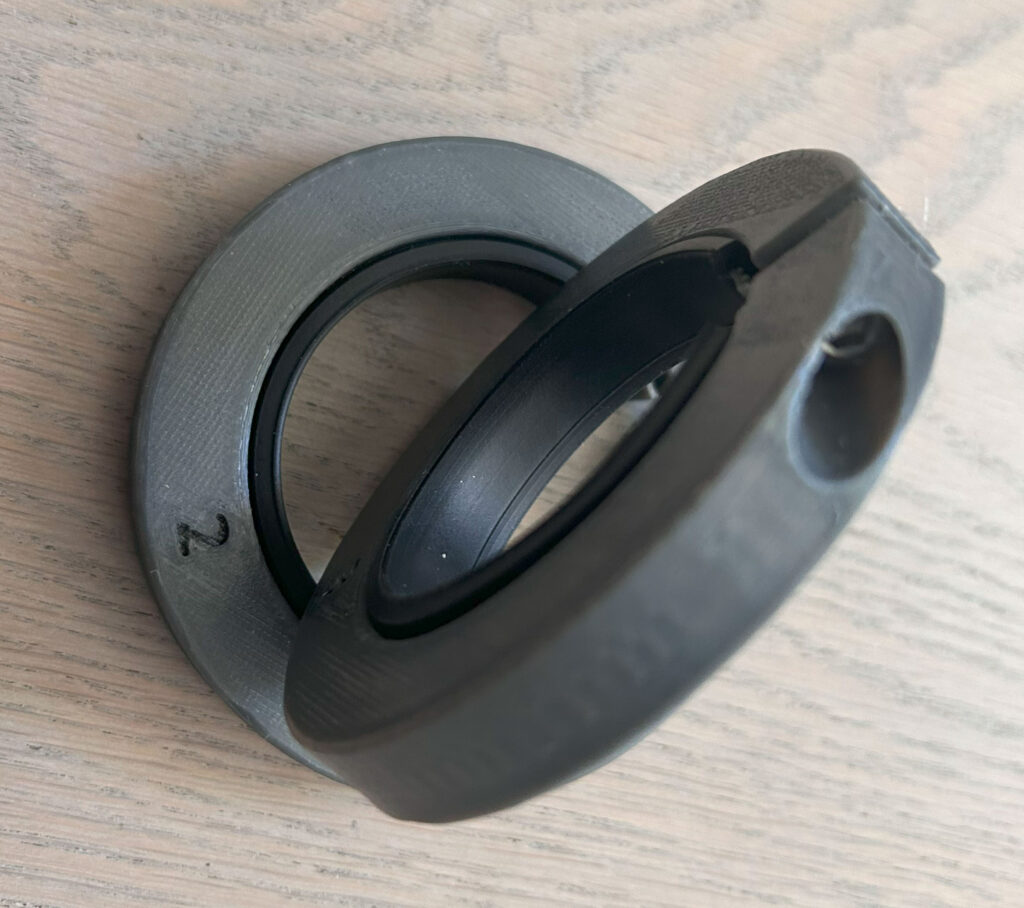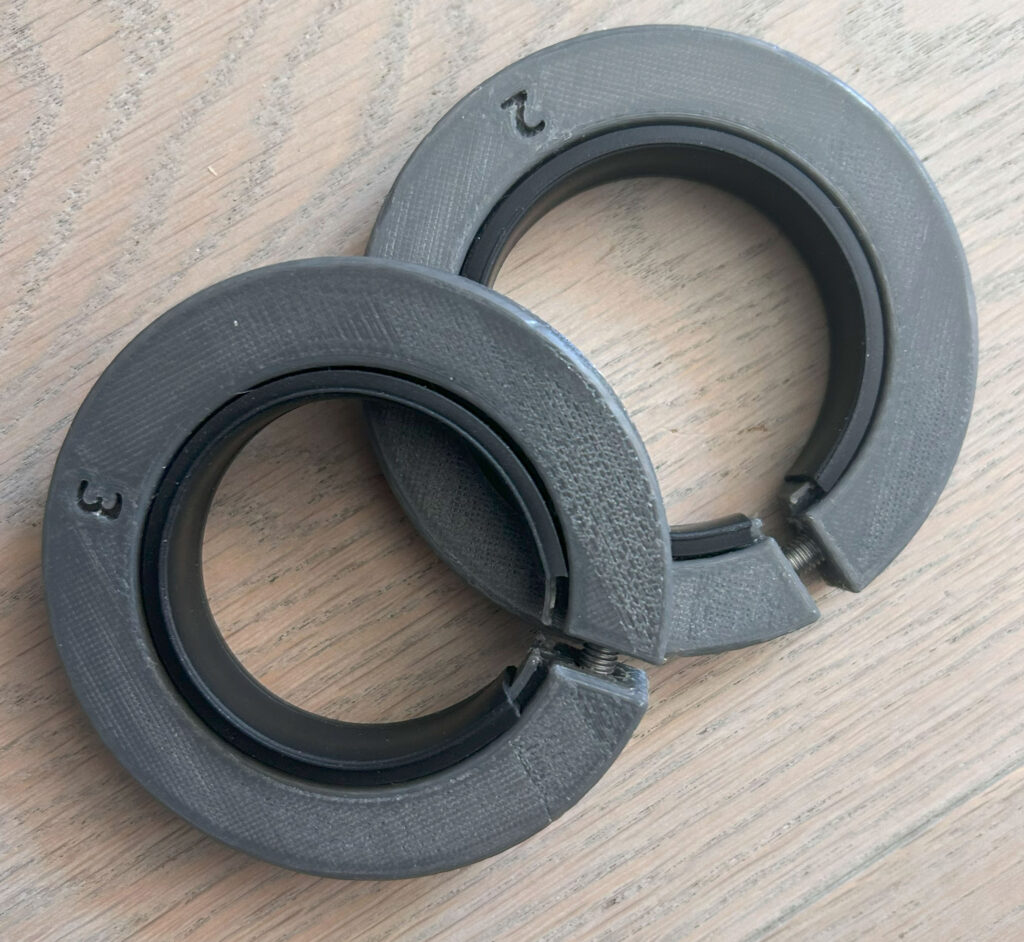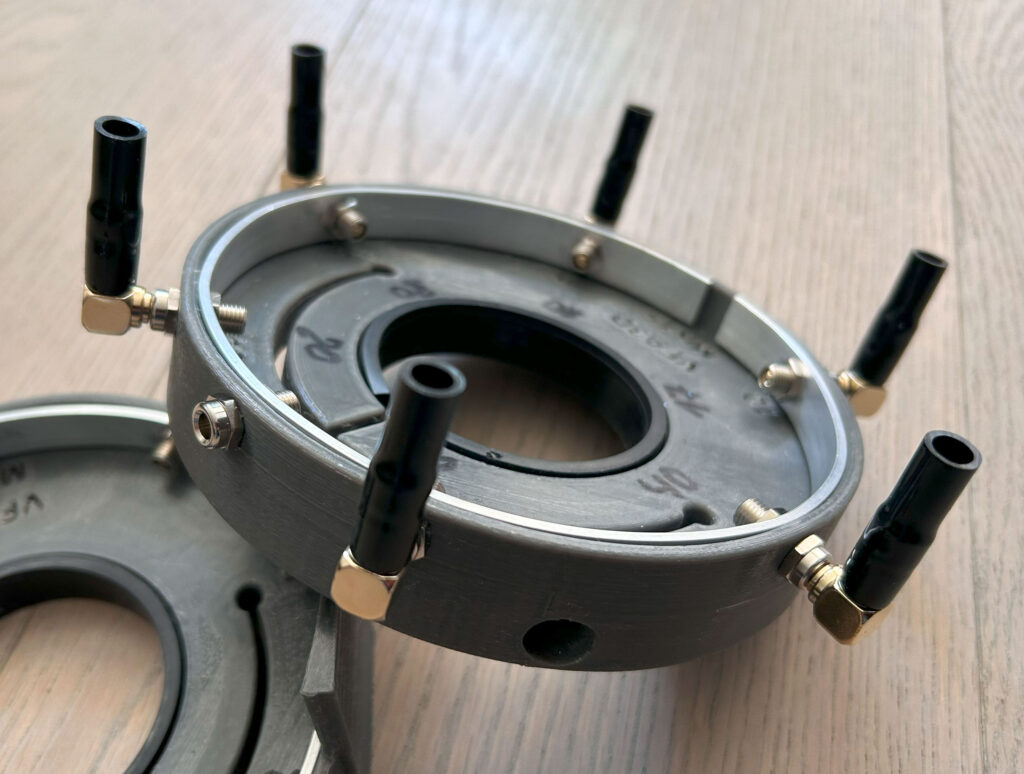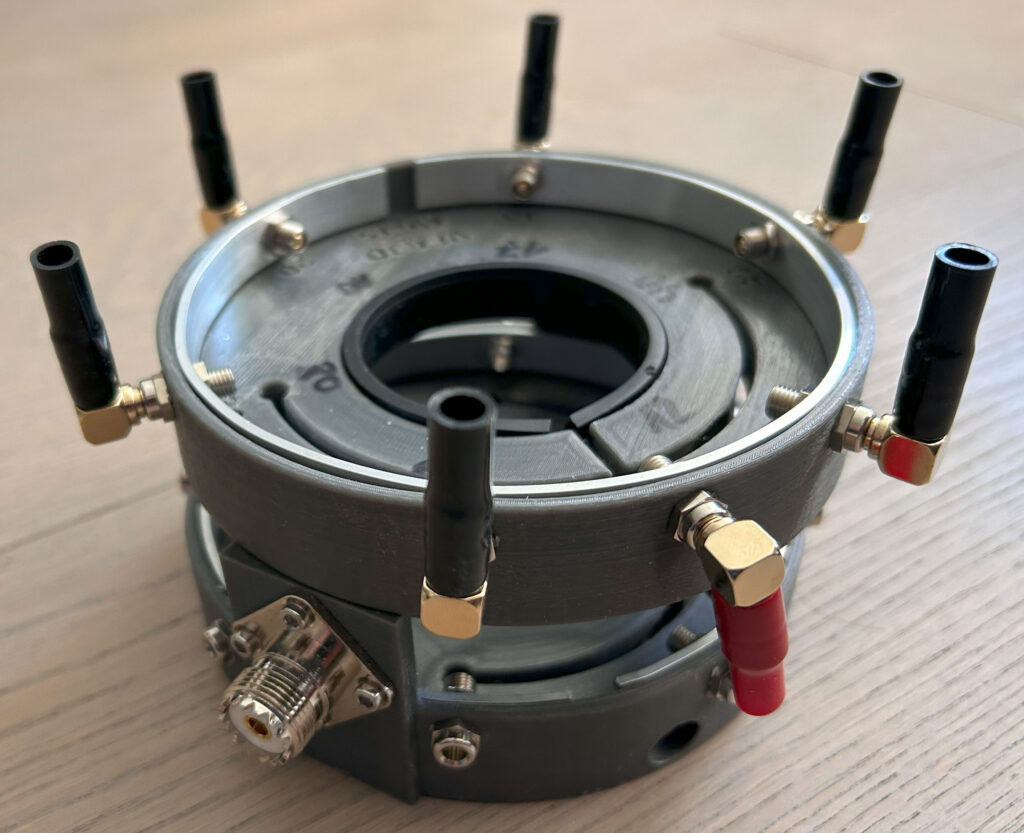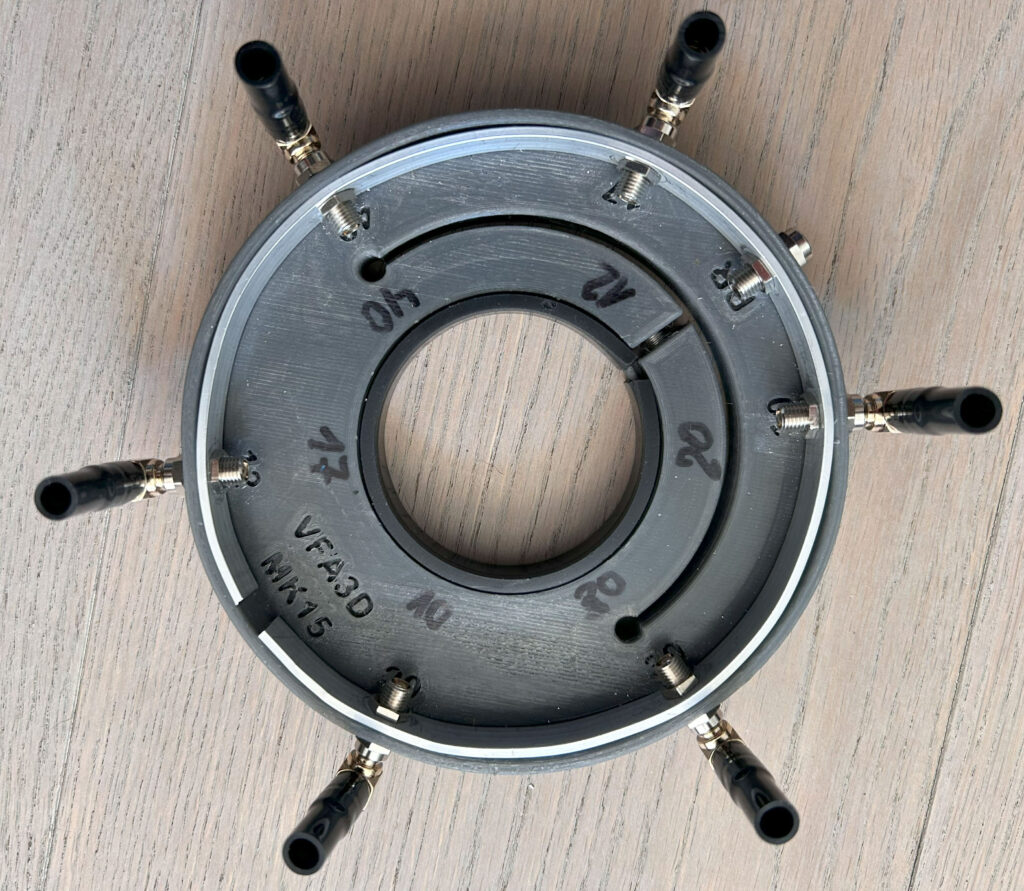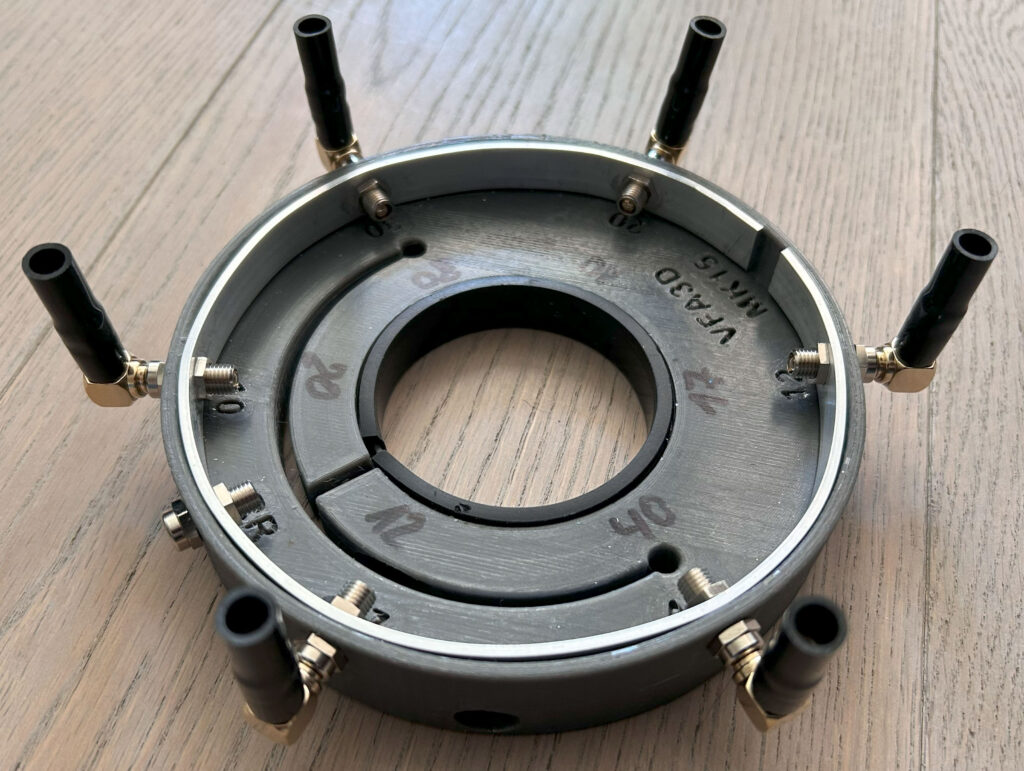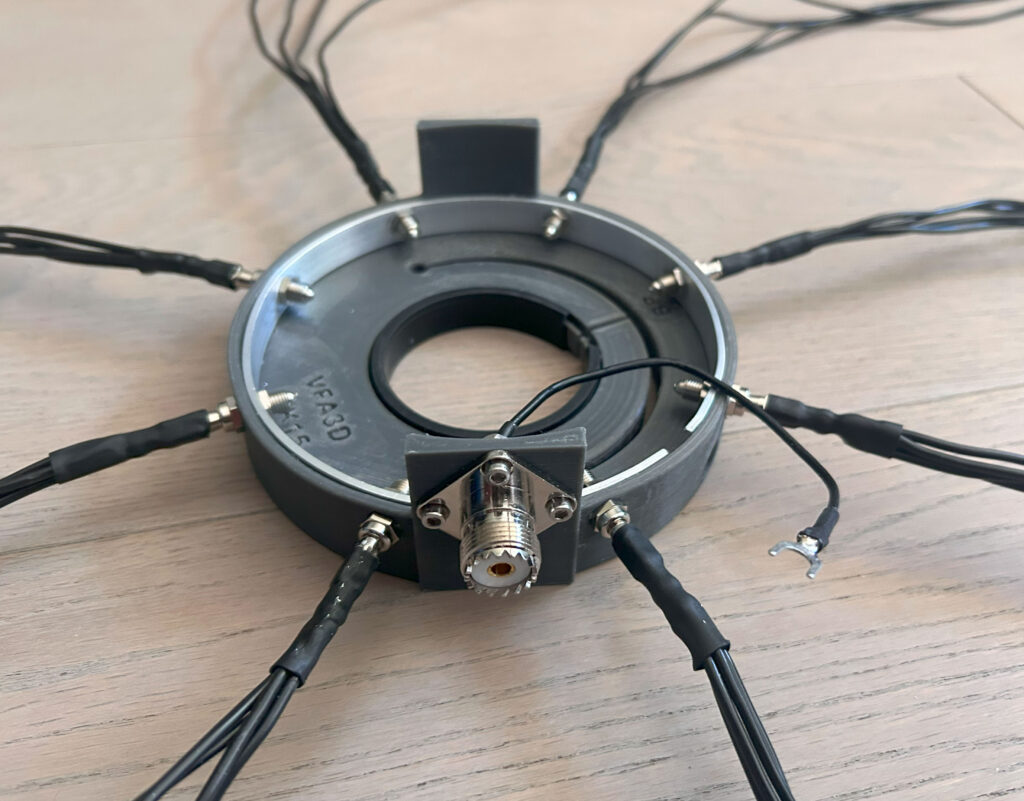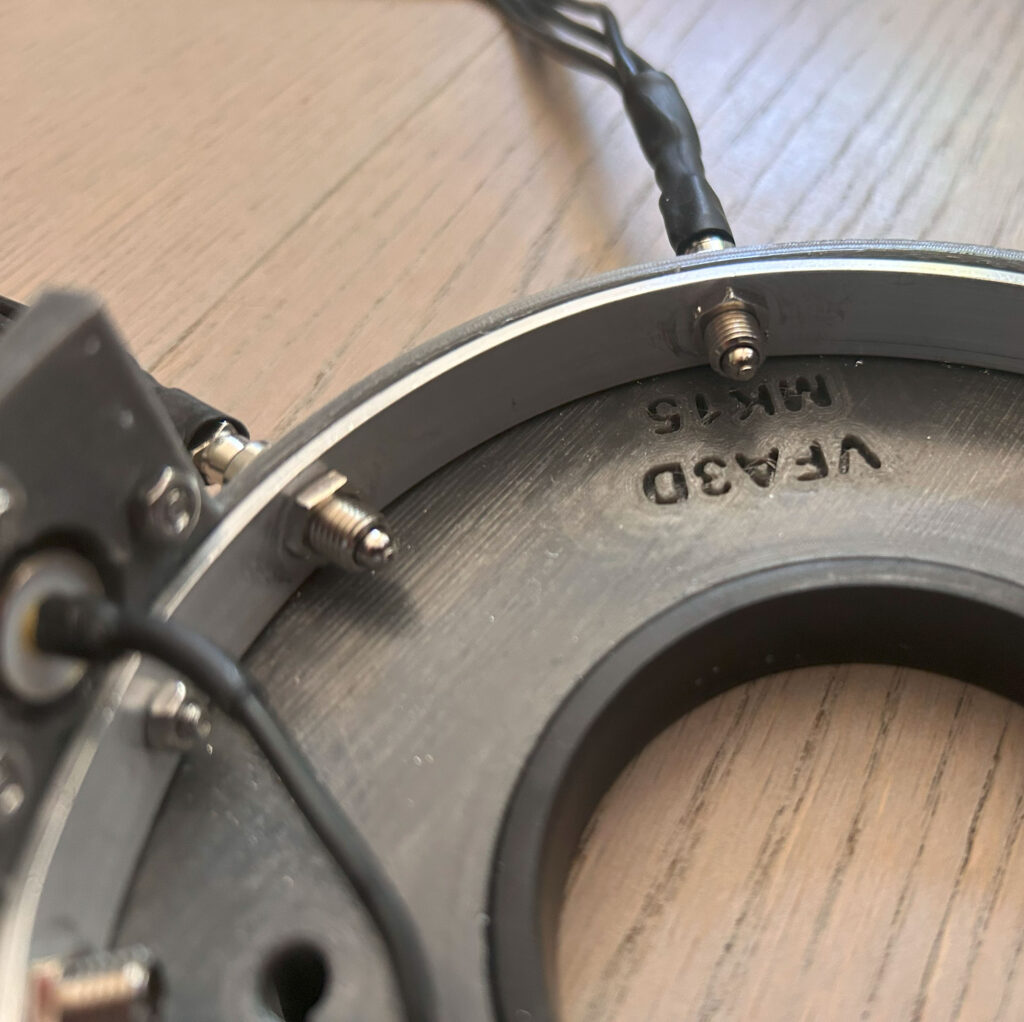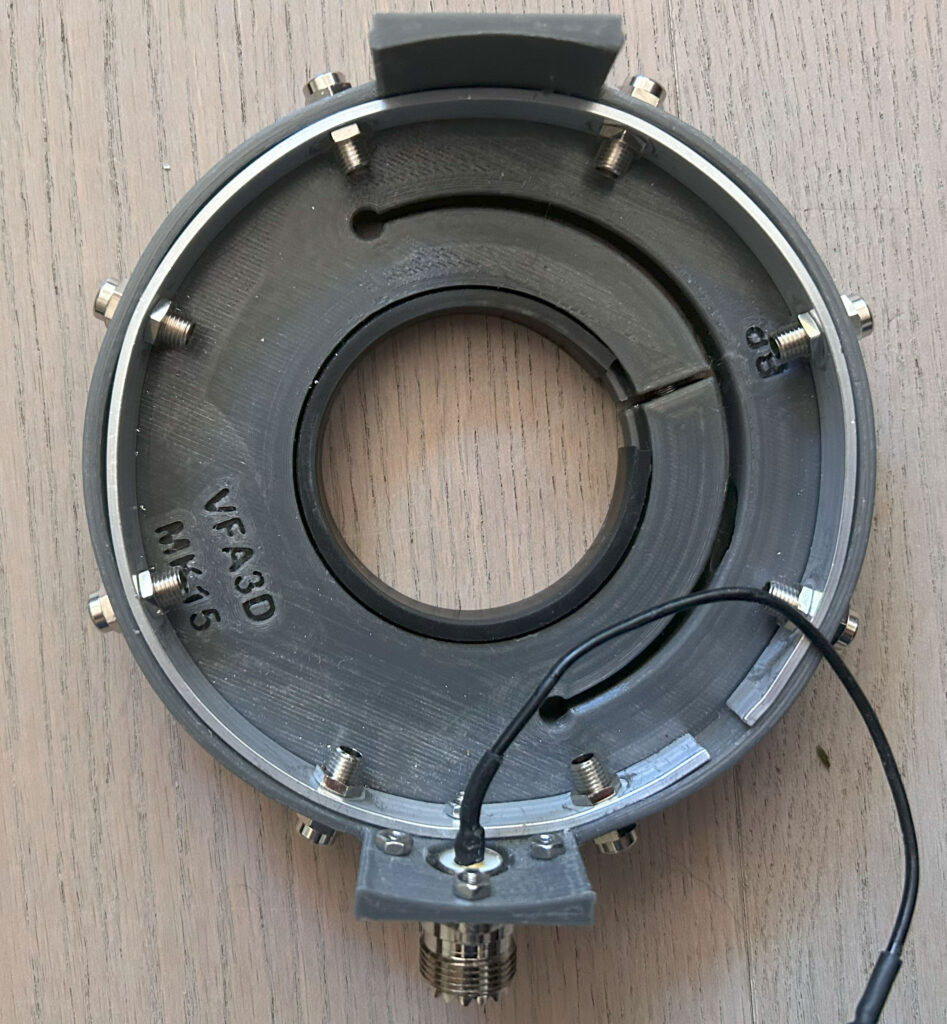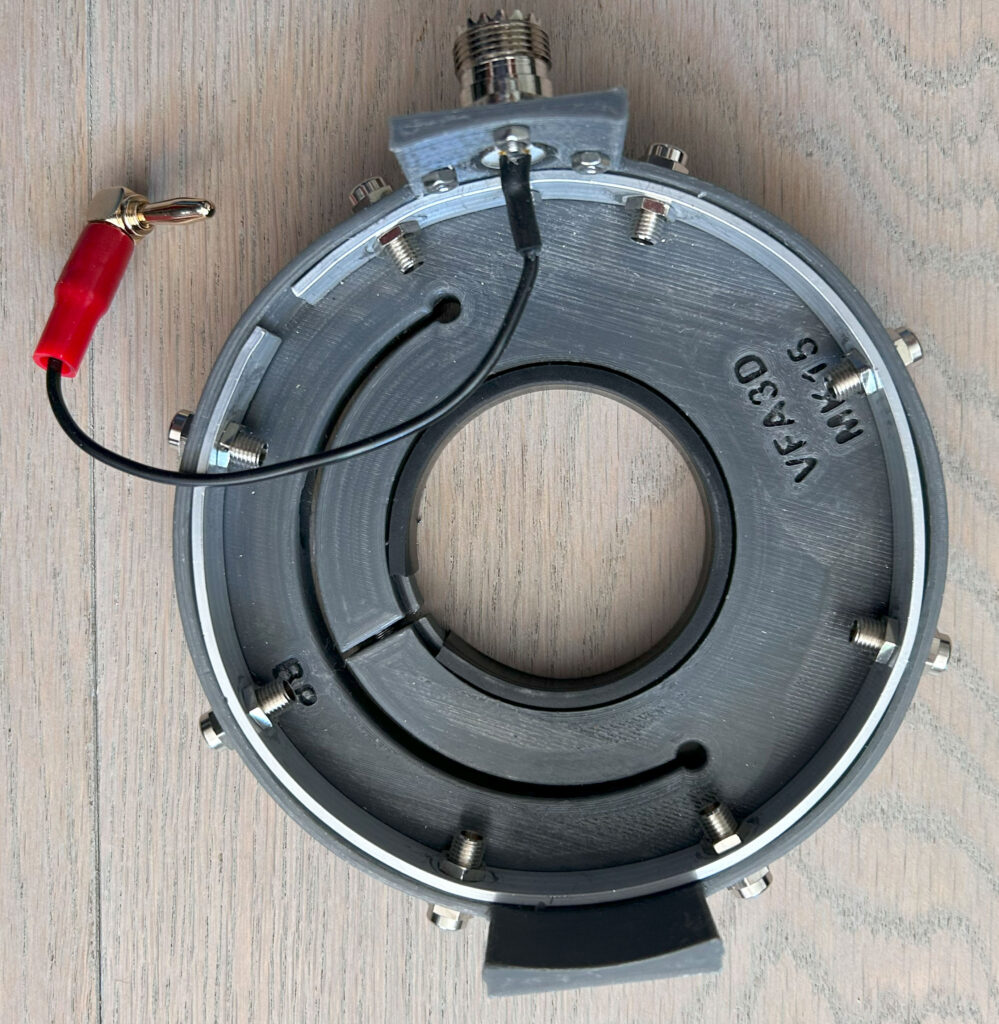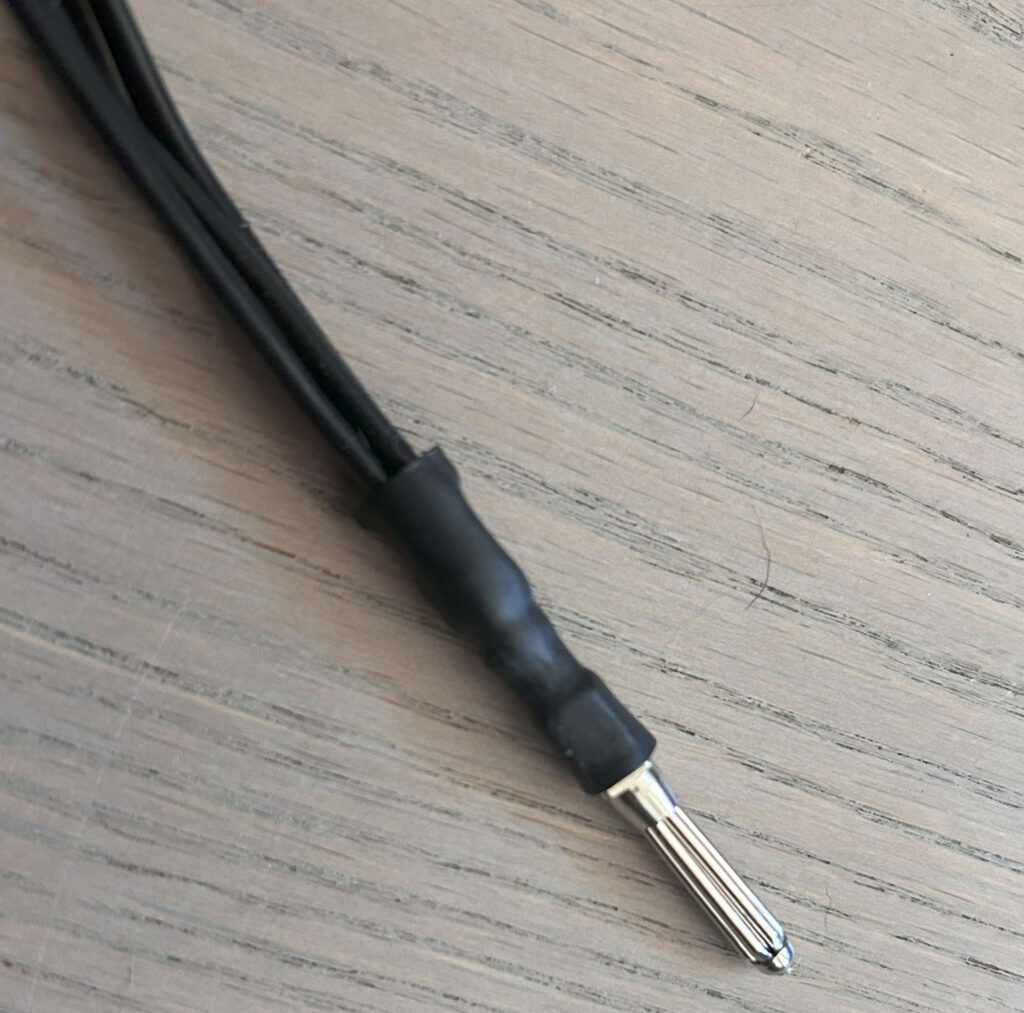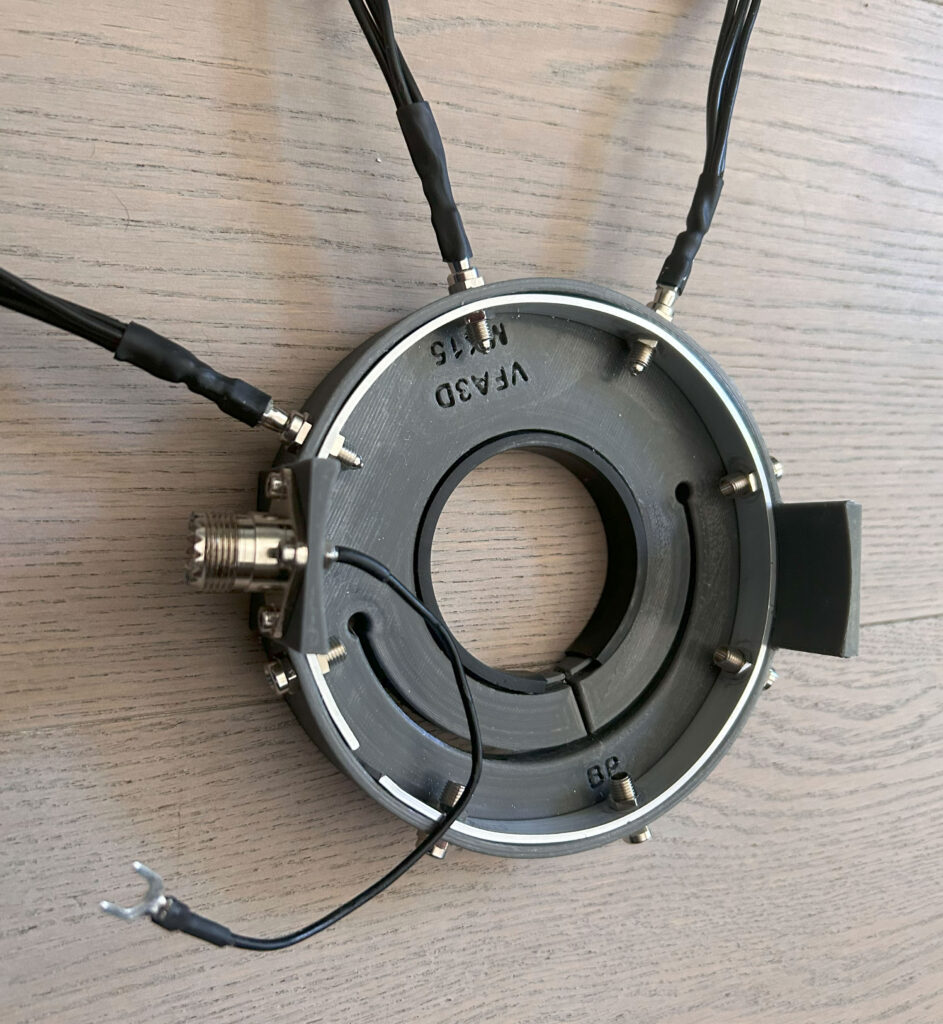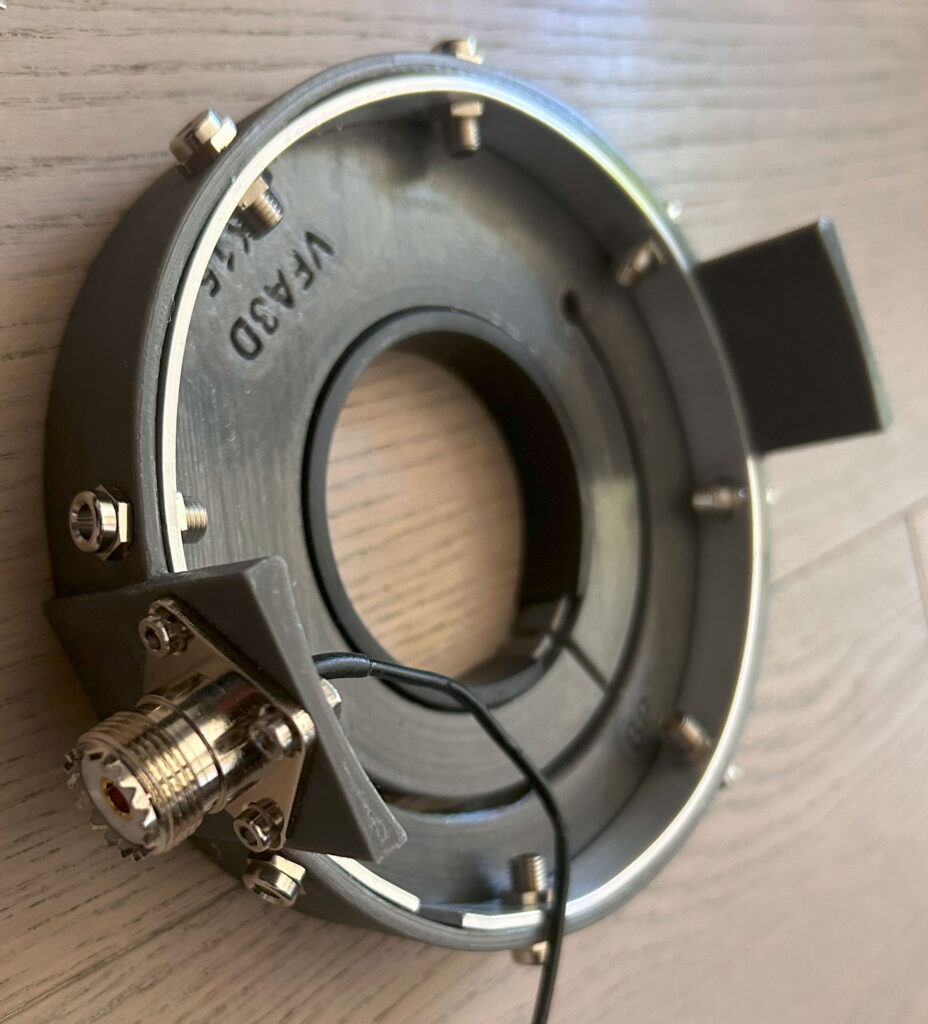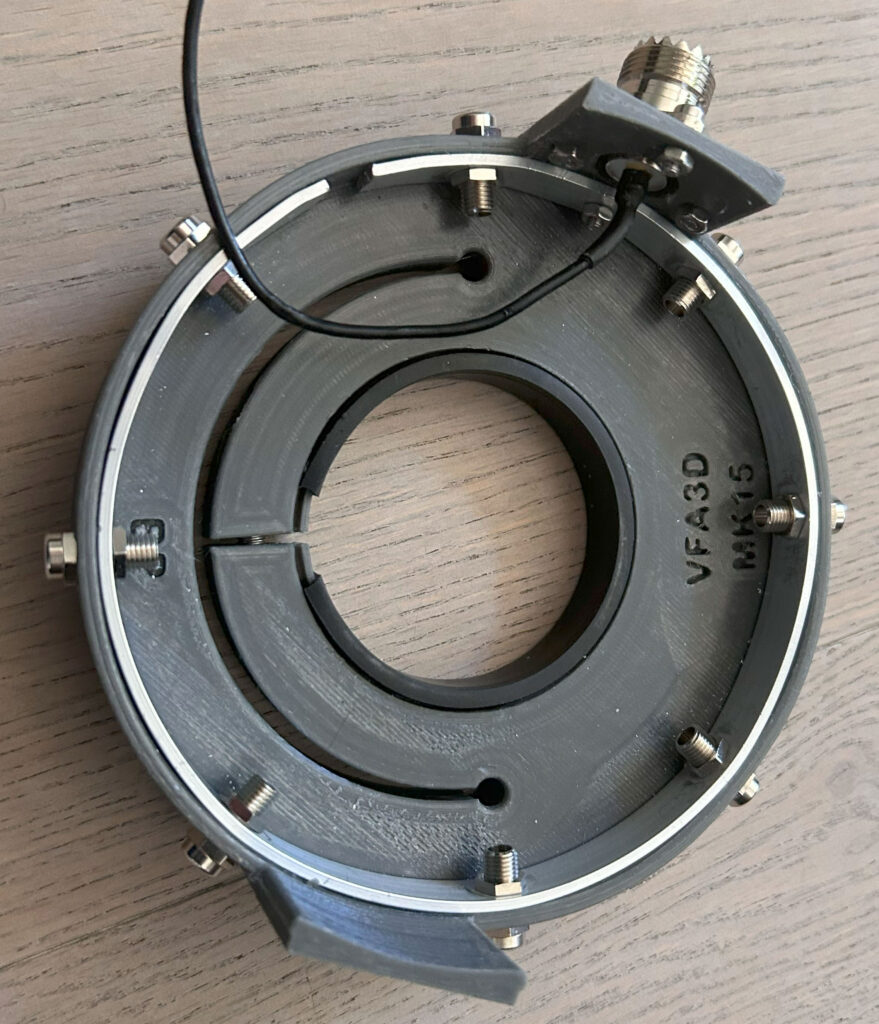The VFA3D is based on the M0MCX concept for a vertical multi-band antenna with radiator for the corresponding amateur radio bands. Once tuned, the antenna does not require an antenna tuner and thus enables a quick band change.
What makes the VFA3D stand out is the integrated clamping device with which the plates and clamping rings hold their position on the pole and the use of rubber C-profiles to distribute the pressure better to the fiberglass pole. There is therefore no need for cable ties or similar to hold the plates in place. I first saw the clamping ring concept on the Ice Cone antenna from DO0PAT.
The VFA3D also uses 4mm banana sockets and plugs for quick assembly and disassembly. This eliminates the need to screw on eyelets or fork contacts.
As I don’t have the space to permanently install an antenna, the VFA3D is optimised for portable operation. The aim was to reduce the number of components to a minimum and to use as few special parts as possible. Apart from the 12m spider beam mast, the DX10 antenna wire and some screws, nuts and plugs, everything can be produced using 3D printing.
I am currently using PETG filament, which offers better temperature and UV resistance than PLA. PETG does not pose any major challenges for 3D printing and is therefore just as easy to print as PLA filament.
3D printed parts
# BP – Base Plate (1x)
# RR – Radiator Plate (1x)
# GP1 – Guy Plate (1x)
# SPM – Spreader Plate (1x)
# GP2 – Guy Plate(1x)
# TOP (1x)
# Clamp Ring (6x)
# Loop Maker (6x)
# Elastic Cord Stopper (6x)
Remaining components
# Spiderbeam 12m
# Antenna wire
# Elastic band
# M5 square nuts
# M5 cylinder head screws
# Aluminium flat profile 11×2 mm
# Rubber C-profile
# 4 mm banana sockets
# 4 mm banana plugs
# SO-239 socket with M3 screws and nuts
# Shrink tubing with hot melt adhesive
